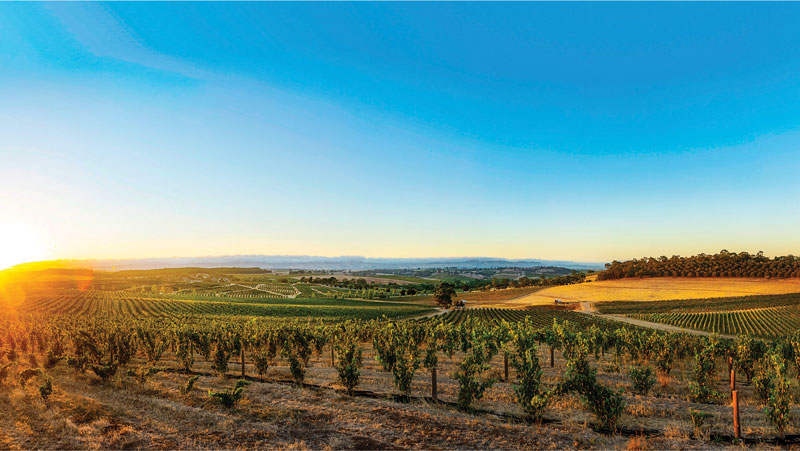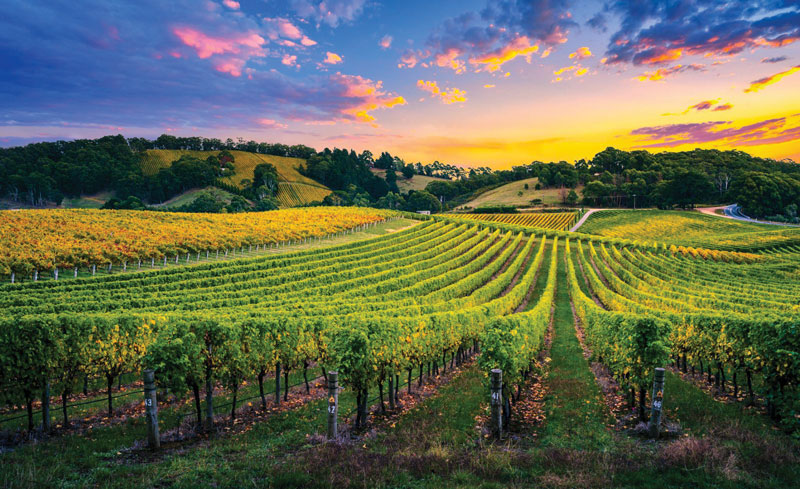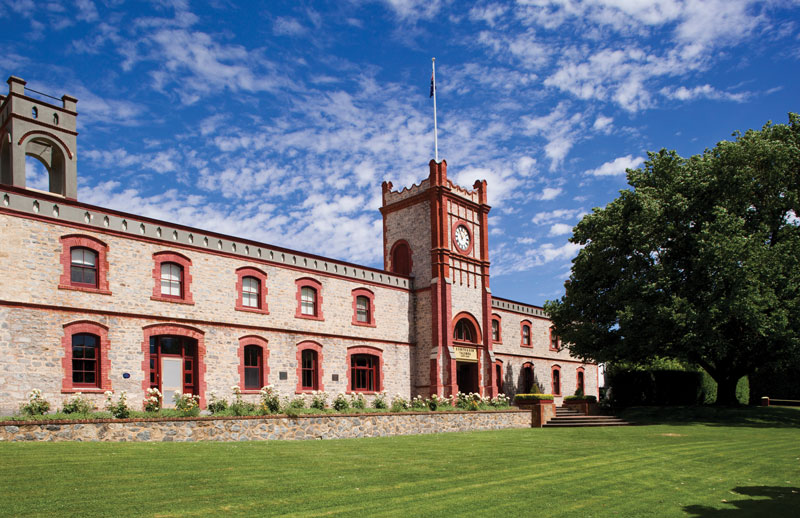Despite the existence of three climate zones (tropical, subtropical, and temperate) in Australia's wine-growing regions, grapevines have managed to adjust to high temperatures for over two centuries
Australian viticulture emerged in New South Wales when European communities arrived in 1788. This subtropical land saw the first vines being planted. As time passed, several key figures emerged, including British John Macarthur. He promoted the cultivation of vitis vinifera in the Sydney thriving state, realizing the need to expand the vines, just like it was being done in Europe.
It's worth noting that in 1822, the first bottles of wine were exported to London, England. Even today, English people are drawn to Australian red, white, and sparkling wine production.
A Scottish viticulture enthusiast named James Busby arrived in Australia in 1824 and left behind a theoretical legacy on the cultivation of grapevines in the country. Twenty years later, one of the most prestigious wine companies was established by an English couple, Dr. Christopher Rawson Penfold and his wife, Mary, who embarked on a road trip to this land of extreme nature.
Charmed by the beauty of Southern Australia, the Penfolds purchased land in Adelaide Hills, forming the Penfolds Magill Estate, currently located just 25 minutes away from Adelaide. Although the brand has become a marketing phenomenon, with popularity soaring in clubs in Singapore, Miami, and China, it is still preserving vineyards in Adelaide Hills, McLaren Vale, Coonawarra, and Eden Valley.
Awesome Shiraz
The state of Victoria, located in the southwest of the country, became famous in the 1850s for the discovery of gold. However, the wine-growing industry in this region also introduced Pinot Gris, alternatively known as Pinot Grigio. This grape variety is highly coveted by producers for the delicate, elegant, and complex wines it produces, that can be paired with scallops and oysters. However, it is outdone by Chardonnay, which is cultivated on over 52,000 acres, compared to Pinot Grigio's 9,000 acres.
Shiraz, the representative of Australia among red wines, always stands out. This wine is voluptuous due to its mature flavor that envelops the mouth with fruitiness. Curiously, new wineries have been using the word Syrah instead of Shiraz on their labels to emphasize elegance and move away from the old, concentrated wines with excessive oak.
One of the regions that have been cultivating Shiraz since ancient times is Coonawarra. The famous Prodigy wine is produced from Shiraz grapes grown in carefully tended plots in the red terra rossa soil prevalent in this area. This small rectangle-shaped area has well-draining red soil that many wineries take advantage of to produce wines. Two examples of wineries found here are Katnook Estate, which has operated since 1867, and Balnaves, a small family-owned business that got its start in 1975. However, the production of wine can be disrupted by spring frosts.
Tasmania, the fresh one
Vine planting in Tasmania started as early as the 1820s. Bartholomew Broughton, the winemaker who founded Prospect Farm, owned one of the first vineyards. During the initial period, vineyards were located in the Tamar Valley due to its suitability for producing slow-ripening grapes.
To produce high-quality sparkling wines, producers have sought out the coolest sites in Tasmania to cultivate Chardonnay, Riesling, Sauvignon Blanc, and Pinot Noir. The House of Arras E.J. Carr wine is an example of this. This wine, made from a blend of Chardonnay and Pinot Noir, undergoes the ten-year lees aging process for its tenth late bottling in the 2007 vintage. This wine, when tasted, features an unmistakable combination of nougat and a citric note of dehydrated lemon. Additionally, the wine boasts seductive notes of honeycomb and spice that shine in the aroma. As a result, it receives awards every time it releases a new vintage.
Jansz Tasmania, led by Jennifer Doyle, competes with this label in prestige. This winery stands out for its sustainability systems. The special edition Premium Rosé NV is particularly noteworthy, as it is made in the traditional French champagne style with careful pressing and double fermentation, which imparts a delicate aroma of strawberries and rose petals while remaining vibrant and refreshing.
Accommodation options in the Yarra Valley
If you are visiting Australia for the first time and interested in wine, it is highly recommended to plan a visit to the Barossa Valley, located near Adelaide. In this area, Artisans of Barossa offers wine enthusiasts the opportunity to attend Masterclasses via the Grenache Project. These classes include a guided tasting session featuring six distinct Australian wines.
One of the oldest wineries in the region is located near the town of Angaston in this valley, which you can visit. Yalumba was founded by Samuel Smith in 1849. During this era, the fifth generation of the Hill-Smith family is promoting Australian wines, and the winery's prestige is complimented by the traditional production of wine barrels. Visitors can observe this tradition being maintained by watching the Wine Room, which is adorned with barrels made of oak from various parts of the world.
Located in the state of Victoria, near Melbourne, Balgownie Estate is a winery that includes a 70-room resort with a view of the Yarra Valley, where Pinot Noir and Chardonnay have been grown since 2003. The 1309 Restaurant offers wine pairings featuring wines produced by winemaker Tony Winspear, providing a culinary experience that enables appreciation of wines originating from this unique island.
For more information: www.balgownie.com/yarra-valley
Text: Cindy Agustín ± Photo: Loki wine, John Kruger, Vinantia, Randy Larcombe, Vinoble, Fizz Jansz






